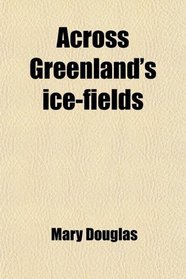Search -
Across Greenland's ice-fields
Across Greenland's ice-fields
Author:
Purchase of this book includes free trial access to www.million-books.com where you can read more than a million books for free. This is an OCR edition with typos. Excerpt from book: CHAPTER II. SEALING, AND WHAT CAME OF IT. OF all the animals which inhabit the Polar regions, none—not even the reindeer—is more generally useful than the se... more »
Author:
Purchase of this book includes free trial access to www.million-books.com where you can read more than a million books for free. This is an OCR edition with typos. Excerpt from book: CHAPTER II. SEALING, AND WHAT CAME OF IT. OF all the animals which inhabit the Polar regions, none—not even the reindeer—is more generally useful than the se... more »
ISBN-13: 9780217163521
ISBN-10: 0217163521
Publication Date: 8/9/2009
Pages: 112
Rating: ?
ISBN-10: 0217163521
Publication Date: 8/9/2009
Pages: 112
Rating: ?
0 stars, based on 0 rating




